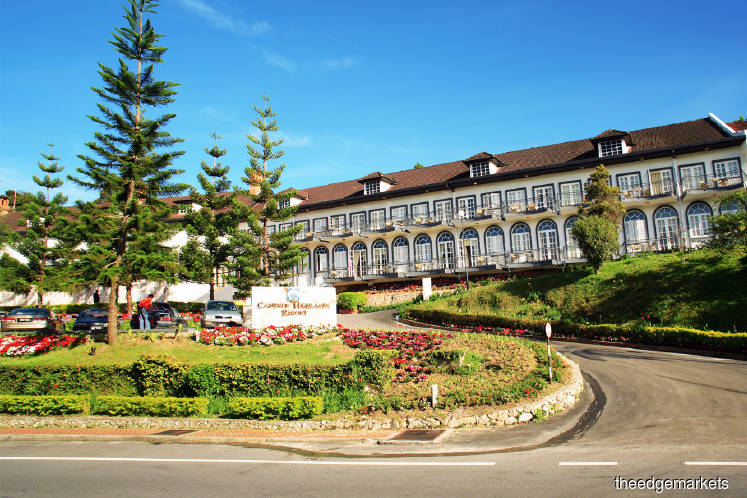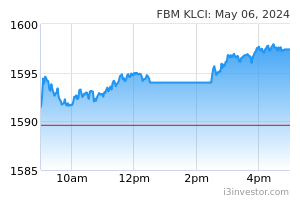The YTL REIT attraction: High dividend yield, low PER

YTL Hospitality REIT may currently be trading at an all-time high of RM1.36, but a closer look at its valuation unearths an interesting trend that may pique the interest of investors on the hunt for dividend yielding stocks.
Malaysia’s only hospitality REIT is trading at a lower price-earnings ratio (PER) but higher distribution yield than regional peers such as Singapore-listed Far East Hospitality Trust and Ascott Residence Trust.
YTL REIT has a distribution yield of 5.81%, but is trading at 17.2 times PER and a price-to-net asset value (NAV) of 0.86 times.
As a comparison, Ascott’s distribution yield is lower at 3.83%, while its price-to-NAV is 1.28 times and PER 25.77 times.
Far East’s distribution yield is 5.15% and PER 18.82 times.
Of YTL REIT, a local analyst says, “It is at an all-time high now, but it might not necessarily mean it is expensive. It still has decent yields at 5.81%. It’s a decent buy for an income-yielding investor. Additionally, at its all-time high now, YTL REIT is still not at its highest in terms of its PER band and price-to-book ratio — they hit 17.53 times and 0.87 times respectively in 2017.”
Meanwhile, AmResearch property and REIT analyst Thong Pak Leng believes the REIT still has legs to run.
“We believe the stock still has upside. Plus, the REIT’s yields of 6% to 7% is above the industry average of 5%,” he says, adding that the brokerage has a “buy” call with a fair value of RM1.56.
“We like YTL REIT due to it being a hospitality REIT with exposure to the Australian market, which continues to grow, and at the same time has master leases on properties in both Malaysia and Japan that provide steady income. They have started in Japan and there’s a possibility of expanding further in that market,” he adds.
Another analyst at a local bank notes: “We generally like the REIT as half of it is based on master-leased assets, where rental yield will remain resilient coming from Malaysian and Japanese properties. So, at least half of the earnings will be supported by that and half will come from the Australian properties. Additionally, it has a parent that can give it strong support for future pipelines in terms of assets and future injections.”
New acquisition by 1H2020?
There appears to be plans for an injection of assets this year. YTL Hospitality REIT has a capacity to debt fund over RM800 million in acquisitions and industry sources say it will likely purchase UK assets from its parent company by the first half of this year.
“They are looking at five UK properties that are currently under its parent right now and the price tag is to be in the region of how much it can borrow — which is in the RM800 million range,” says an industry source.
YTL REIT’s total borrowings as at the first quarter ended Sept 30, 2019 (1QFY2020) was RM1.98 billion versus total assets of RM4.809 billion, translating into a gearing of 41.4% — comfortably below the 50% limit.
Because of the 50% threshold, YTL REIT is able to borrow up to some RM800 million for debt-funded acquisitions.
The New Straits Times had previously reported that YTL Corp would be injecting about RM1 billion of UK properties into YTL REIT this year. As at end-June 2019, YTL Corp owned 56.95% of YTL REIT.
The REIT’s most recent acquisition was in 2018 when it acquired the 200-room The Green Leaf Niseko Village for ¥6 billion. A year before, it had acquired the 300-room The Majestic Hotel Kuala Lumpur for RM380 million.
The two asset purchases came five years after the REIT’s foray into the Australian market in 2012 when it bought the Sydney Harbour Marriott, Melbourne Marriott and Brisbane Marriott for a total of A$415 million.
The REIT had ventured into Japan a year earlier in 2011 when it acquired Hilton Niseko Village for ¥6 billion.
In its latest quarter — 1QFY2020 — YTL REIT saw its net profit rise over 240% year on year to RM39.6 million, boosted by a few factors, including higher room sales post-refurbishment of its Australian hotels.
It also saw higher rental income contribution from JW Marriott post-refurbishment completion last June, as well as rental income contribution from its new asset, The Green Leaf Niseko Village.
In the quarter, net property income rose 11.4% y-o-y to RM62.7 million.
Revenue rose 6% in the same period to RM120.7 million.
Its current investment portfolio contains 15 properties with a fair value of RM4.62 billion.
( 24,36 % )
( 39,38 % )
( 36,26 % )


